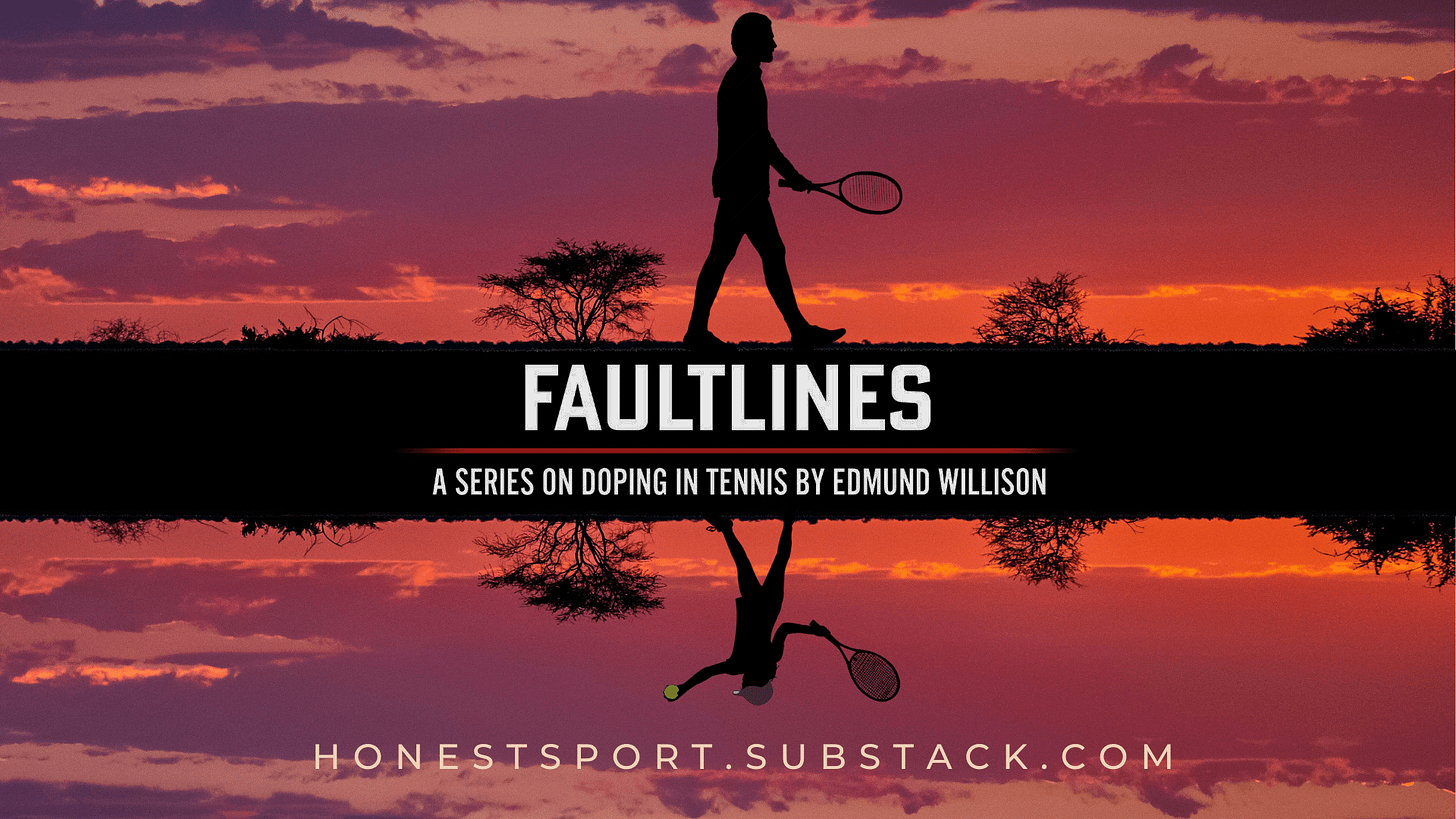Introducing Faultlines - a series on Doping in Tennis
The series will run all year.
Every Monday and Thursday, I send a newsletter to paid subscriber’s inboxes with the URLs to all the major doping stories in the press over the past seven days.
Part 1: Top Polish tennis player's nutritionist spoke of 'experiences' with banned drug meldonium
During a press conference at the 2016 Laureus Sports Awards, the 24-time grand slam winner Novak Djokovic was asked about a topic that the professional tennis world had always been happy to ignore.
Just months earlier, the Wimbledon champion Maria Sharapova had tested positive for the heart medication meldonium and the topic of doping was now front and centre.
Djokovic was duly put on the spot and shared an opinion, also similarly espoused by Rafael Nadal and the US Open champion Dominic Thiem, that did not agree with the World Anti-Doping Agency Founding President Dick Pound.
“As long as there is no proof that somebody is doping, the sport is clean,” said Djokovic. “I think it all comes down to anti-doping agencies, governing bodies - they need to come out with proof, if they don’t it’s only rumours. I am actually proud to be part of a sport that is clean, pure, that is keeping its integrity.”
Nadal said that same year. “I have total confidence that all my rivals are totally clean…I believe in people until they show you otherwise.”
For Pound, the logic was flawed and, also, predictably in keeping with the ‘Gentleman’s Game’, and other sports’, unwillingness to uncover the true extent of the problem.
“That's a Lance Armstrong approach. 'I never tested positive therefore I am clean.' Wrong,” said Pound. “I think it goes deeper than most people expect, and certainly deeper than they are prepared to acknowledge.”
While the players were of course entitled to their opinions, it was of more concern that the International Tennis Federation’s (ITF) official charged with tackling doping, Stuart Miller, had previously suggested the sport was not susceptible to drug taking.
In 2009, Miller said that blood doping agents, such as EPO, were potentially of little use in a sport based on skill rather than endurance; three of the four grand slam finals that year lasted over four hours.
“It may be that tennis is not conducive to EPO,” said Miller. “Maybe tennis is not a sport that is driven by a need to maximize stamina, which is what EPO essentially does.”
In the same year as those comments, the ITF failed to conduct a single out-of-competition EPO test and in 2012, the year Roger Federer, Rafael Nadal, Andy Murray and Novak Djokovic shared the four grand slams, that number rose to only 38.
Given Miller’s outlook and the blunt anti-doping programme he operated, albeit on behalf of his superiors, blood doping in the sport was near impossible to uncover.
So, finally, it was at this moment that I decided to start investigating the issue myself, first as a sports fan, and then as a journalist for British newspapers and international television stations.
With Jannik Sinner and Iga Swiatek, who have both served doping bans in the past year, winning the Wimbledon singles titles a fortnight ago, I think the time is ripe to start publishing more of this research.
I, therefore, present ‘Faultlines’ – a series on doping in tennis which will run and run.
Over the course of the next year, and even beyond, I will publish exclusive investigations on doping in tennis – a topic that can no longer be ignored.
Part 1: Top Polish tennis player's nutritionist spoke of 'experiences' with banned drug meldonium
I have undertaken major doping investigations for British newspapers (link) and international broadcasters such as ITV and ARD. For discussions regarding potential doping investigations at your news organisation, please contact honestsport@substack.com.






